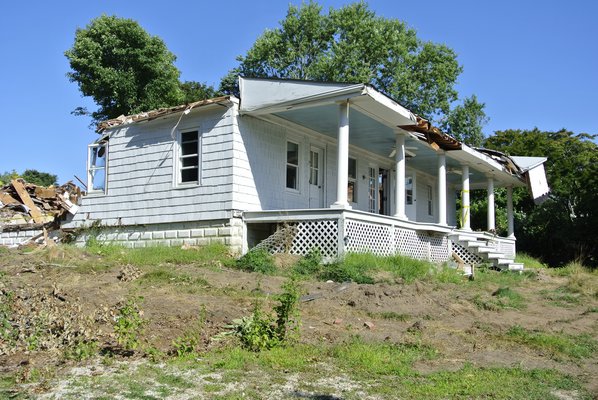
We want and deserve tin-can architecture in a tin-horn culture. And we will probably be judged not by the monuments we build but by those we have destroyed.
-Ada Louise Huxtable
The demise of the Pyrrhus Concer house tells us more about a climate of greed on the East End than we ever wanted to know. David Hermer and Silvia Campo bought the Concer property at 51 Pond Lane in 2013 for $2.75 million with the intention of throwing down a nondescript, dumpy old house and building a new one on a 0.82-acre prime piece of Southampton Village real estate.
There was just one little problem—they and/or their advisors didn’t do their due diligence regarding the fact that this historic district house, at one time, happened to belong not only to a person of significance in Southampton’s history but also to the history of the African-American community as well. Concer, a freed slave who had traveled the world during the whaling era and had the distinction of being the first black man to visit Japan, returned to Southampton and became a respected member of the community.
But wait! Maybe these buyers had done their due diligence all along. After learning that the building was a cultural resource of historic significance they pleaded their case for demolition to the Board of Architectural Review and Historic Preservation. After months of review the ARB rejected their appeal for a certificate of appropriateness. When the applicants couldn’t have their way they lawyered up and bullied the village with the threat of a $10 million lawsuit citing violation of property rights. The village caved to the pressure and worked out a deal with the owners, which would allow the village a commemorative plaque on the property and also dismantle the house, thereby saving its historic fabric so it could be reconstructed on another property at a future date.
During the hearing process, the owners’ consultant claimed that there was little 19th-century material remaining in the building. This begs an issue, a common practice at ARBs, of owners’ consultants who have been hired as professionals to basically tell a board only what the owners want a board to hear. Why don’t these villages wake up and hire their own independent consultants and have the applicants foot the bill? It would certainly alleviate the problem of the fox watching the chicken coop.
The dismantling of the house actually revealed that the sill system was hand hewn, the rafters were reciprocally sawn, and basement floor joists were a full 2 inches thick. Additionally, the building contained gunstock posts, which have an inverted flare. These existing condition items, commonly found in early 19-century wood frame construction, essentially confirm the age of the structure.
By allowing the deconstruction of this building by the village, the owners had yet another win-win, since they didn’t have to pay for the majority of the demolition.
And now, after a year-and-a-half brouhaha, the final punch in the gut came on December 15, when the owners wrote to the village to announce that they were abandoning the project altogether. There were no reasons given for this decision, and they have not responded to phone calls. It is interesting to note that the property, according to maps in the 1999 Comprehensive Master Plan, sits in an archaeologically sensitive area. Anyone planning to build on this site would have to take this into account, as a finding of artifacts could greatly delay the construction process.
The property is now listed for sale at $4.995 million with ARB-approved plans in place for a speculatively designed, banal, 5,700-square-foot shingled home with a 496-square-foot guest-house and swimming pool.
For $2.75 million, why didn’t David Hermer and Silvia Campo buy a nondescript ranch house on a nice piece of property in Southampton and build a honking spec house there instead? Did they really think that stripping this historic district property of its house would bring them more money because of its location? Sometimes the wrong people simply buy the wrong properties. Why buy a historic house in a historic district and demand to tear it down because it just isn’t big enough? Why put an egregious addition on a historic house in a historic district? As a Southold Landmarks Commissioner often says, “Would you paint a mustache on the Mona Lisa?”
It is evident that the Hamptons are simply a commodity on the trading block. The Philistines are no longer at the hedgerows—they have trampled through as vandals of the first rank and they know how to work the system.